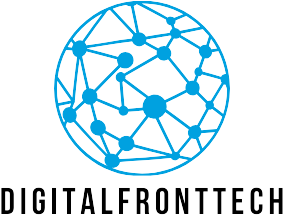Table of Contents
ToggleIn the world of 3D printing, choosing the right CAD software can feel like finding a needle in a haystack—if that needle could also magically create your wildest designs. With countless options out there, it’s easy to get lost in a sea of features, pricing, and user-friendliness. But don’t worry, it’s not all doom and gloom!
Overview of CAD Software for 3D Printing
Various CAD software options cater to different needs in the 3D printing landscape. Each program offers its unique features that address specific user requirements. For instance, beginner-friendly tools such as Tinkercad simplify the design process, allowing users to quickly create and modify models. Advanced users often prefer software like SolidWorks or Autodesk Fusion 360, which provide extensive functionalities and complex design capabilities.
Cloud-based solutions are gaining traction within the 3D printing community. These platforms, such as Onshape, offer collaboration features that enable multiple users to work on projects simultaneously. Accessibility becomes a crucial aspect when considering CAD software, as remote working continues to grow in popularity.
Licensing and pricing structures significantly influence software choice. Some programs follow a subscription model, allowing users to pay monthly or annually. Others offer one-time purchases, making them more appealing for users looking for long-term solutions. Free versions exist, albeit with limited features that may not meet all user expectations.
Compatibility with 3D printers is another essential factor in choosing CAD software. Some tools generate files in formats commonly used by most printers, such as STL or OBJ. Users must ensure their selected software integrates smoothly with their specific 3D printer.
Staying updated with the latest software versions ensures access to improved features and functionality. Many developers introduce regular updates that enhance user experience and expand capabilities. Adapting to changes within CAD software can lead to more efficient design processes and better end results in 3D printing.
Key Features to Consider

Selecting the best CAD for 3D printing requires attention to several key features. Each aspect can significantly impact the design process and overall printing experience.
User-Friendliness
User-friendliness stands out as a crucial characteristic. Simple interfaces attract beginners, while intuitive navigation enhances productivity. Programs like Tinkercad exemplify this by offering drag-and-drop functionalities, making design accessible. Advanced options can overwhelm novice users, so balancing complexity with ease of use promotes effective learning. Check user reviews for insights on usability and support resources to ensure a smooth experience.
Compatibility with 3D Printers
Compatibility with 3D printers directly influences design efficiency. CAD software that supports multiple file formats ensures seamless integration with various printers. Users must verify that the software can export files in formats like STL or OBJ, which are commonly accepted by most 3D printers. Cloud-based tools often provide updated printers libraries, enhancing compatibility. Thoroughly researching printer requirements informs better software choices.
Advanced Tools and Functionality
Advanced tools and functionality elevate the design experience for seasoned users. Features like parametric modeling and simulation capabilities allow for intricate designs and testing. SolidWorks and Autodesk Fusion 360 are examples that offer extensive functionalities tailored for complex projects. Evaluating toolsets based on project needs determines the best software fit. Discussing requirements with teams ensures that selected software meets collaborative and individual design necessities.
Top Picks for Best CAD for 3D Printing
Selecting the right CAD software significantly impacts 3D printing success. Here’s a closer look at top choices that cater to various user needs.
Software 1: Features and Benefits
Tinkercad is highly recommended for beginners due to its intuitive interface. It offers drag-and-drop functionality, making 3D modeling straightforward. Users can quickly create designs with basic shapes and tools. Tinkercad operates entirely in the cloud, enabling easy access from any device without downloads. Collaboration remains seamless, as users can invite others to work on projects in real-time. It also supports STL file exports, ensuring compatibility with most 3D printers. This software abstracts complexity while providing essential features for successful designs.
Software 2: Features and Benefits
SolidWorks stands out for advanced users seeking robust functional capabilities. It features parametric modeling, allowing for precise control over design parameters. Users benefit from detailed simulation tools that test real-world performance of models. SolidWorks provides extensive libraries of standard parts, streamlining the design process. Its compatibility with a variety of 3D printers is noteworthy, catering to professional environments. Integrated collaboration tools enhance teamwork, allowing for effective communication and project management. The software’s powerful capabilities make it ideal for engineering and product design.
Software 3: Features and Benefits
Autodesk Fusion 360 is versatile, serving both beginners and experienced users effectively. It combines CAD, CAM, and CAE in a single platform, providing comprehensive design solutions. The cloud-based nature of Fusion 360 facilitates real-time collaboration among teams, regardless of location. Its parametric design features allow users to make quick adjustments and iterations. Furthermore, the integrated simulation capabilities support users in predicting how designs will perform under various conditions. This capability is particularly valuable for iterative design processes, ensuring optimal results for 3D printing projects.
Comparison of Pricing Models
Pricing models for CAD software vary significantly, affecting user choice. Subscription-based programs often provide flexibility, charging a monthly or annual fee. Users benefit from continuous updates and support with these models. One-time purchase options, however, offer a single upfront cost, appealing to those who prefer ownership without recurring fees.
Free versions exist, particularly for entry-level software like Tinkercad, allowing beginners to explore CAD without financial commitment. Advanced users who require more features may consider programs like Autodesk Fusion 360, which frequently runs promotions on its subscription fees. Licensing options can further complicate pricing; some programs limit usage to personal projects, while others may include commercial licenses.
Licensing structures can contain essential factors, including the number of allowed seats for collaborative work. For teams, multiple-user licenses often provide cost savings compared to individual subscriptions. Students and educators usually gain access to significant discounts or free versions of software like SolidWorks.
In addition, cloud-based platforms like Onshape typically operate on a subscription basis, eliminating installation hassles while ensuring everyone has access to the latest version. This model also promotes collaboration among multiple users in real-time.
Investing in CAD software depends on project needs and budget constraints. Prioritizing features such as support, updates, and usage rights ensures users make informed decisions. Exploring several pricing options leads to more tailored software solutions that align with both individual and team requirements.
Choosing the right CAD software for 3D printing can significantly impact the design process and final results. With a variety of options available it’s essential to consider individual needs and project requirements. From beginner-friendly platforms like Tinkercad to advanced tools such as SolidWorks and Autodesk Fusion 360 each software offers unique features that cater to different skill levels.
Staying informed about pricing models and software compatibility ensures users make the best choice for their specific 3D printing projects. By evaluating these factors users can confidently navigate the CAD landscape and enhance their 3D printing experience.






